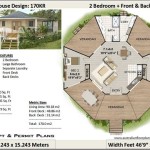How Do I Get a Floor Plan of My Home?
Obtaining a floor plan of a home can be essential for diverse purposes, ranging from interior design projects and renovation planning to insurance assessments and real estate transactions. A floor plan is a scaled diagram showcasing the layout of a property from a bird's-eye view, depicting walls, doors, windows, and other structural features. Several avenues are available to acquire a floor plan, each with varying levels of effort, cost, and accuracy.
Homeowners often seek floor plans to visualize potential changes, estimate material quantities for projects, or simply to have a readily available reference for furniture placement or utility location. Architects, contractors, and real estate professionals also frequently rely on these plans for their respective work. Understanding the options and considerations involved in obtaining a floor plan is critical to selecting the most appropriate method for a specific need.
Before embarking on the search for a floor plan, it's prudent to determine the level of detail required. A simple sketch showing room arrangements might suffice for basic space planning, while a detailed, measured plan is essential for architectural modifications or permit applications. This initial assessment informs the selection process and helps to set realistic expectations.
Exploring Existing Resources
The first step in acquiring a floor plan is to investigate existing resources. This approach is often the least expensive and time-consuming, though the availability and accuracy of documentation can vary significantly.
One primary source is the original construction documentation. If the property is relatively new, the homeowner may have received a set of blueprints or floor plans from the builder or developer. These documents typically include detailed floor plans, elevation drawings, and other structural information. Checking personal records, such as purchase agreements, mortgage documents, or homeowner's insurance policies, can sometimes reveal the location of these plans.
Local building departments or planning offices are another potential resource. Many municipalities maintain records of building permits and associated documentation, including floor plans, for properties within their jurisdiction. Accessing these records often requires submitting a formal request and paying a nominal fee. However, the availability of these documents depends on local regulations and the age of the property. Older homes may not have readily accessible plans on file.
In some cases, previous owners may have left behind floor plans or renovation documents. Contacting the previous owners, if possible, can be a worthwhile endeavor. Real estate agents involved in the original sale might also have access to historical property data, including floor plans. However, it is crucial to verify the accuracy of any plans obtained from these sources, as they may not reflect subsequent modifications or additions to the property.
Online property databases, such as those maintained by real estate websites, sometimes include rudimentary floor plans or room dimensions. These plans are typically less detailed than architectural drawings but can provide a general overview of the property's layout. However, reliance on these online resources should be approached with caution, as the accuracy and completeness of the information cannot be guaranteed.
Creating a Floor Plan Manually
If existing resources prove insufficient, creating a floor plan manually is a viable option. This approach requires accurate measurements and careful drafting techniques. While it can be time-consuming, it offers a cost-effective solution for homeowners who are comfortable with basic measuring and drawing skills.
The first step involves measuring the interior dimensions of each room. Using a laser distance measurer or a measuring tape, record the length and width of each room, as well as the height of the ceilings. It is crucial to measure accurately and consistently, as any errors will propagate through the final floor plan. Document all measurements in a notebook or on a digital device.
Next, sketch a rough outline of the property's perimeter, including exterior walls, doors, and windows. Use the measured dimensions to create a scaled drawing, typically using graph paper or a digital drawing program. Pay close attention to the relative positions of walls, doors, and windows, ensuring that they are accurately represented on the plan.
Once the basic outline is complete, add interior walls, partitions, and other structural features. Measure the thickness of walls and the dimensions of doorways and windows to ensure accurate representation. Indicate the location of plumbing fixtures, electrical outlets, and other utilities on the plan. It is also helpful to label each room with its intended purpose or function.
Review the completed floor plan carefully, comparing it against the actual property. Double-check all measurements and correct any discrepancies. Consider having a second person review the plan for accuracy and completeness. While a manually created floor plan may not be as precise as a professionally drafted plan, it can provide a useful tool for visualizing space and planning renovations.
For those less confident in their manual drafting skills, numerous software applications and online tools can assist in creating floor plans. These programs often provide templates, symbols, and automated measuring features that simplify the process. Some applications even allow users to import photographs or scan existing documents to create a floor plan automatically. However, the accuracy of these automated features can vary, and manual adjustments may still be necessary.
Hiring a Professional
For the most accurate and detailed floor plans, hiring a professional surveyor, architect, or drafting service is the recommended approach. Professionals possess the expertise, equipment, and software necessary to create precise and comprehensive plans that meet specific requirements.
A surveyor utilizes specialized surveying equipment, such as total stations and GPS devices, to accurately measure the dimensions and elevations of the property. Surveyors typically produce site plans that show the boundaries of the property, as well as the location of buildings, utilities, and other features. While surveyors may not always create detailed interior floor plans, they can provide accurate exterior measurements that are essential for drafting a floor plan.
Architects and drafting services specialize in creating architectural drawings, including floor plans, elevation drawings, and construction details. They can work from existing documents, field measurements, or even conceptual ideas to develop detailed plans that meet specific design and client requirements. Architects typically use computer-aided design (CAD) software to create precise and professional-looking plans.
The cost of hiring a professional to create a floor plan varies depending on the size and complexity of the property, as well as the level of detail required. Simple floor plans for smaller homes can typically be created for a few hundred dollars, while more complex projects, such as large homes or commercial buildings, may cost several thousand dollars. It is essential to obtain quotes from multiple professionals and compare their services and pricing before making a decision.
When selecting a professional, consider their experience, qualifications, and portfolio of previous work. Ask for references from past clients and review their online reviews. Ensure that the professional is licensed and insured, and that they have a clear understanding of the project requirements. A detailed contract outlining the scope of work, deliverables, and payment terms is essential to avoid misunderstandings and ensure a successful outcome.
Professional floor plans offer several advantages over manually created plans. They are typically more accurate, detailed, and professional-looking. They can also be used for a wider range of purposes, such as obtaining building permits, securing financing, or marketing the property for sale. While hiring a professional incurs additional costs, the benefits often outweigh the investment, particularly for complex projects or when accuracy is paramount.
The decision to pursue an existing floor plan, create one manually, or hire a professional depends on the specific needs, budget, and skill level of the individual. Existing resources are the most economical but might lack accuracy or detail. Manual creation is suitable for basic needs but requires careful measurement and drafting skills. Professional services offer the highest accuracy and detail but come at a higher cost. Thorough consideration of these factors is essential for making an informed decision.

House Plans How To Design Your Home Plan

Floor Plan Creator And Designer Free Easy App

3d Floor Plans

My Dream Home Free Design 3d Floor Plans By Planner 5d

House Plans How To Design Your Home Plan

How To Get Blueprints Of Your House

Draw Floor Plans With The Roomsketcher App

How Do I Spatially Plan My Room Bright Side Interiors

My Home First Floor Design Ideas Pictures 105 Sqm Homestyler

House Plans How To Design Your Home Plan
Related Posts








